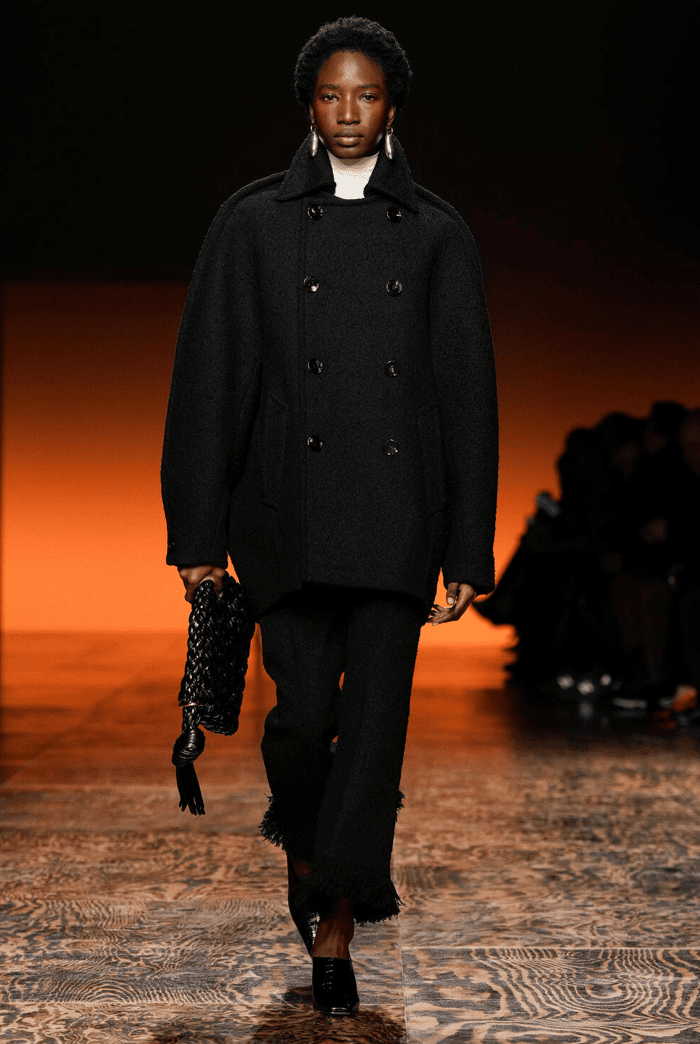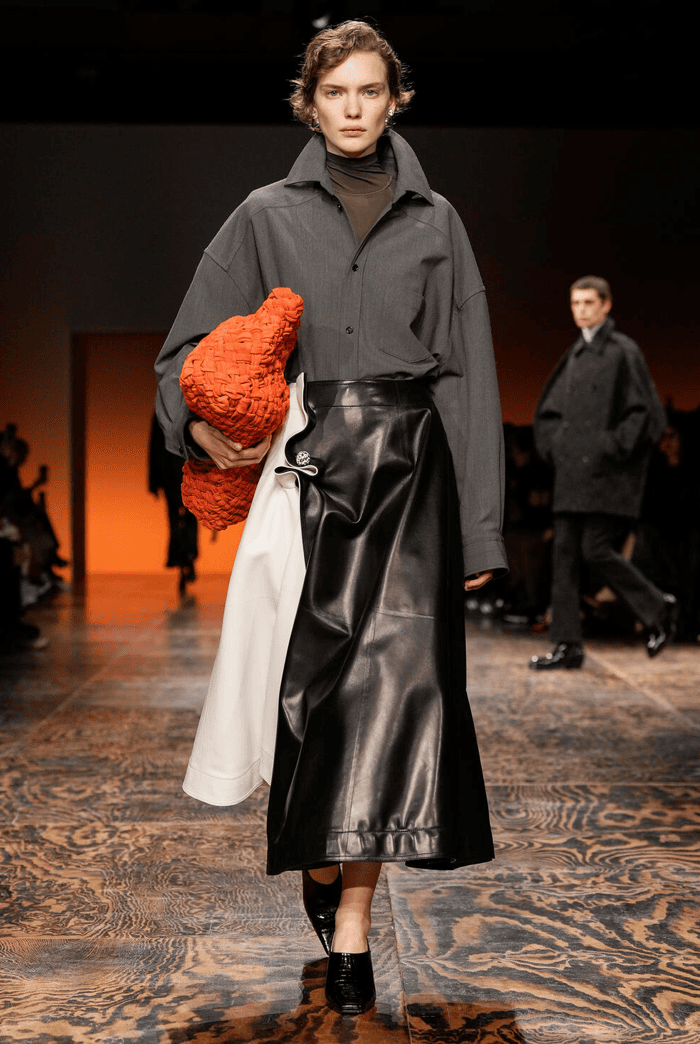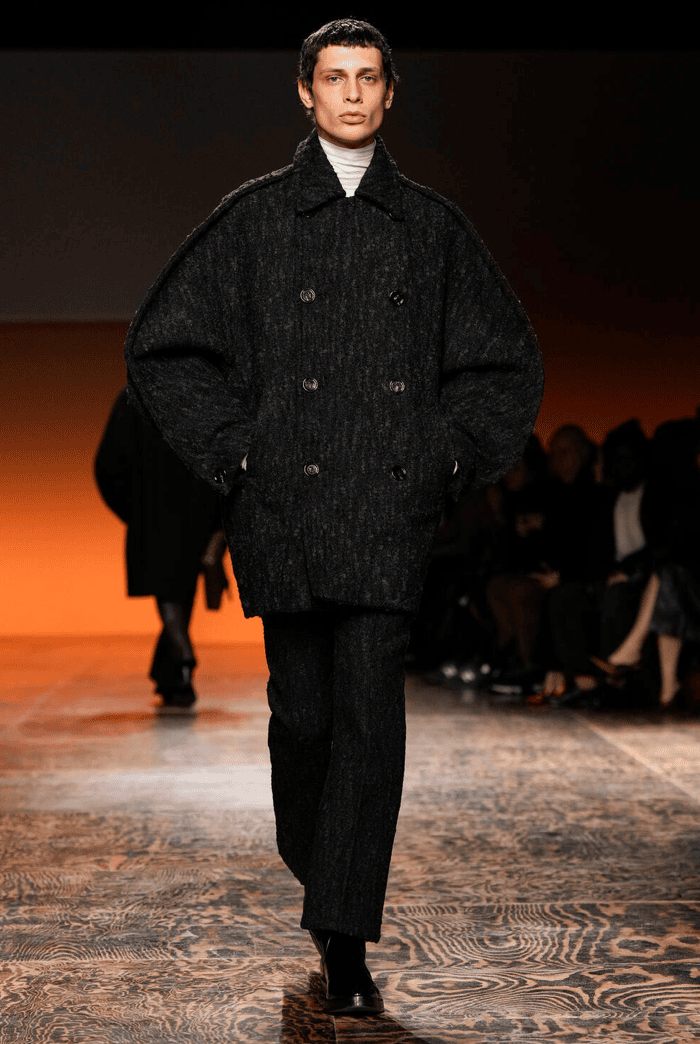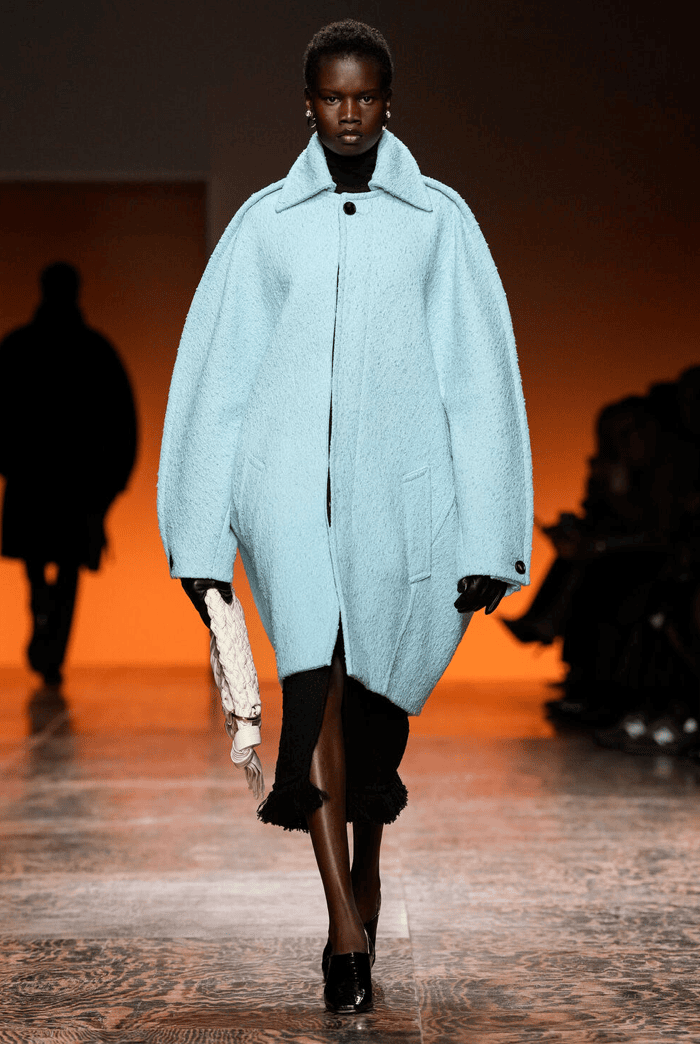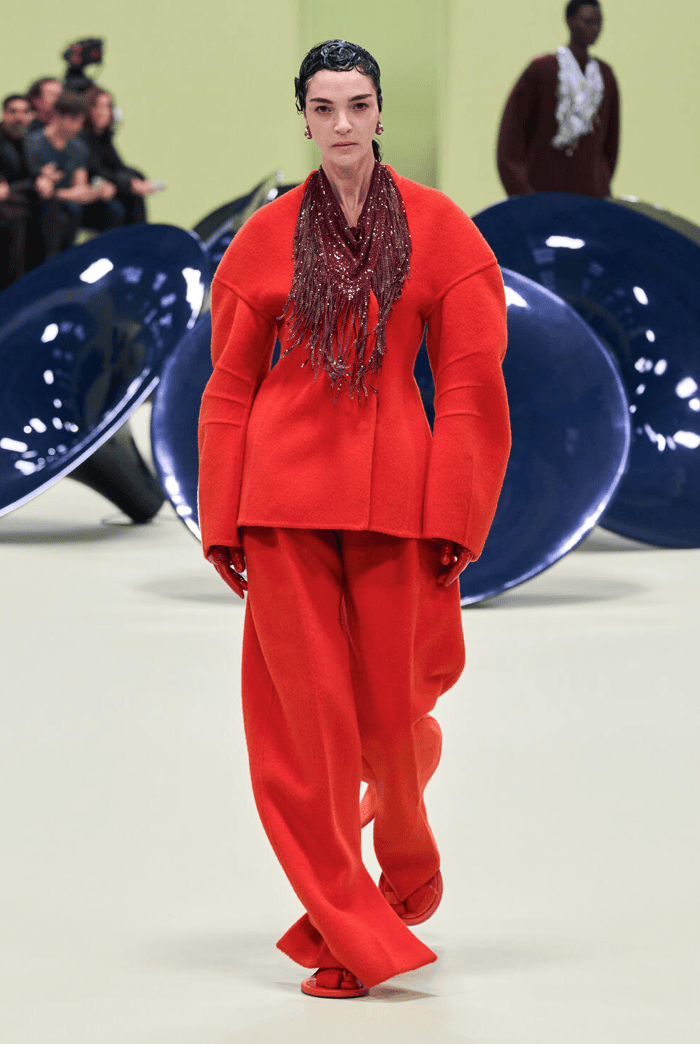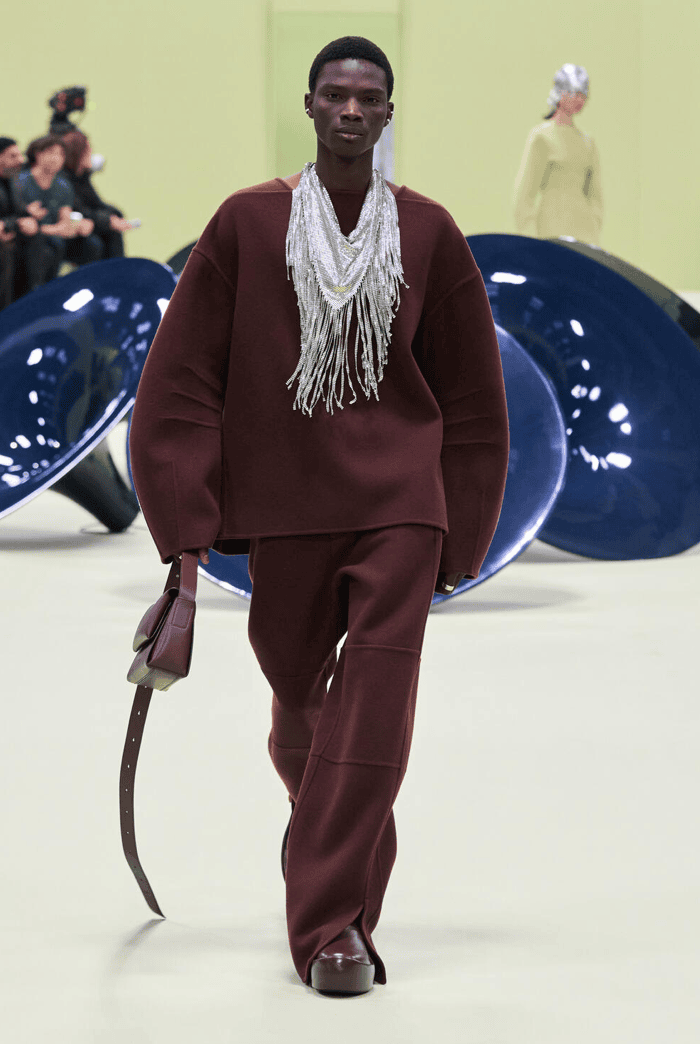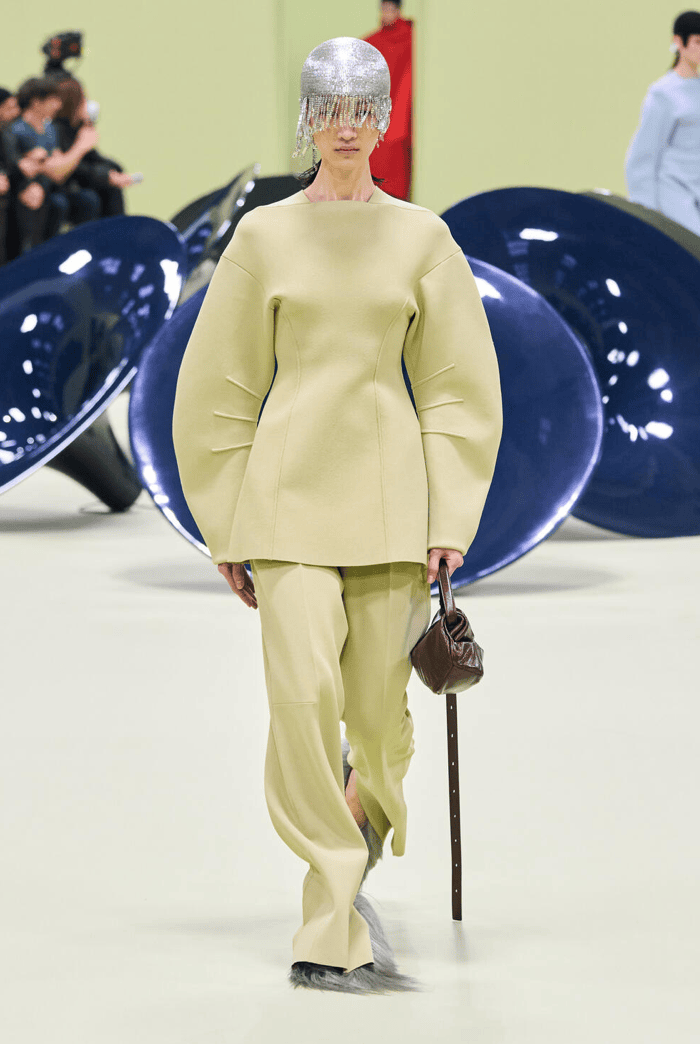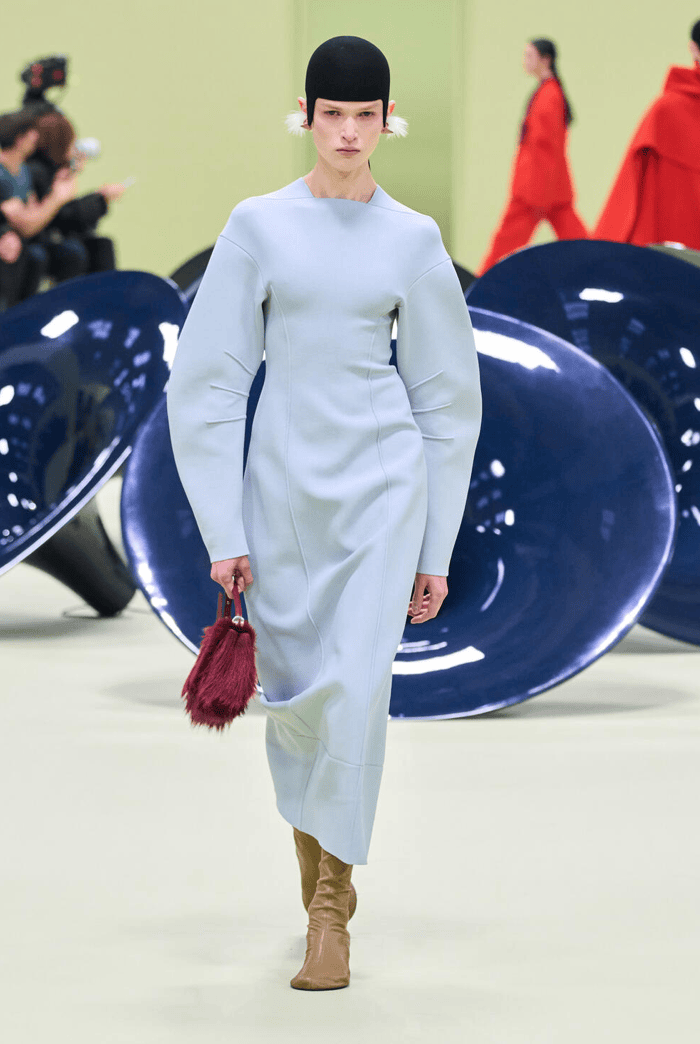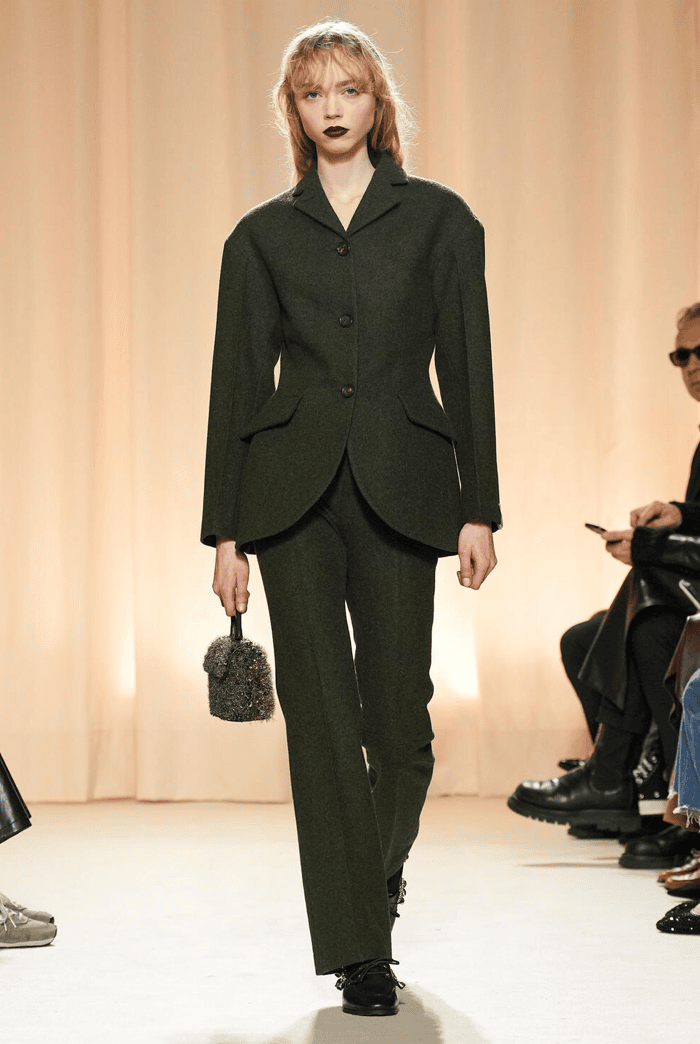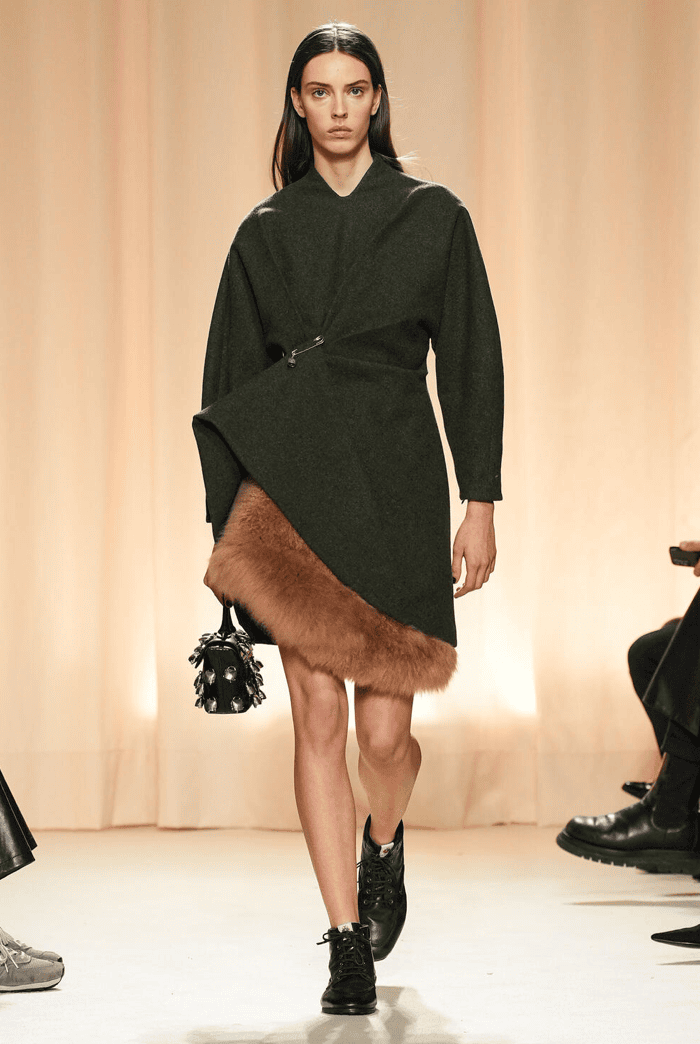Tricks and illusions made previous Bottega Veneta collections go viral, both in the internet and in stores. The fetish for decoding the intricate techniques used to create garments like the leather denim trousers or last season’s crocheted raffia dresses ignited a frenzy of fashion heads and appreciative shoppers. Amidst the current state of the world, Matthieu Blazy decided that it was time to go pragmatic and craft a Fall/Winter 2024 collection with little declarations, as he said backstage after the show.
The arid landscape of the show space was inspired by a barren landscape at dusk where, in a sign of hope, some flora still blossoms. For Blazy, cacti embodied the sentiment he tried to convey, so the space was filled with illuminated cacti made in Murano glass, a now iconic material of the designer’s practice at Bottega. The seating for the show featured a new collaboration with Cassina, who crafted a special edition of Le Corbusier’s LC14 Cabanon stool, which was given a special burnt finish to convey Blazy’s vision of a world on fire.
In the collection, Blazy presented clothes for grownups; for people who have something to do and somewhere to go. Even if the original concept is to rely on the quotidian, the exaggerated and built-up volumes remove the everydayness out of these clothes. Other collections in Milan are conceived with the idea of a red carpet moment in mind, but for Blazy, it has become a ritual to inspire his design process through his daily observations. “I was interested in making a monument out of the every day,” he stated.
Defined seams delineated a round shape on the pea coat and down coat that opened the show, encapsulating the concept that ran through most of the outerwear in the collection. For Fall, Blazy emphasised resilience and the ability to endure difficult times. Thus, he created armoured silhouettes, one in particular caught this editor’s attention: a woolen down coat with such pronounced volume that the model seemed to be shrugging his shoulders. Later, during a re-see, one could understand that the entire effect was achieved architecturally.
On the day of the Jil Sander show, a pro-Palestine demonstration unfolded in Milan. A sense of fervour permeated the city as thousands took to the principal streets; added to the persistent rain and the fashion week congestion. Coincidentally, it’s been three seasons now that Jil day is marked by heavy rain, and in such frenzy, when Milan seems impossible, arriving at their shows is a rather soothing experience.
Soothing is a good choice of word to describe the guiding line of Lucie and Luke Meier’s collection. A feeling of embrace was conveyed via wrapped silhouettes on quilted-down coats and puffers. There was no sparing of fabric in wrap coats, with lapels exaggerated to the point of morphing into capes. Cocoon-like dresses in what seemed to be wool encased all extremities, including the head, via swim caps seen throughout the collection.
Rounded shapes were achieved by sculpting and giving precise darting to sleeves, creating a perfect circumference around the body, which was then accentuated by marking waists. The rounded treatment was extended to the tailoring, seen in the curved corners of jacket hems. Anything curvilinear was only contrasted by the diamond quilting in the textures department, where another highlight came from openwork crochet.
The fur ensembles converged the Meier’s intention of both wrapping and protection, featuring some bulky silhouettes. As the collection progressed, there was a departure from the sense of protection. A strapless dress in metallic mesh exposed the upper body, while its men’s counterpart was a sleeveless top with metallic fringes over the chest line. The solid treatment that kicked off the collection with the outerwear is then juxtaposed by the crochet work and pops of a single graphic print.
In the grandeur of Milan’s Palazzo Serbelloni, Simone Bellotti delivered a Bally collection that starkly contrasted with the neoclassical grandeur of the venue. Citing an exploration of the tension between the sober and the wild, the designer put precise construction at center stage. The result was clothing made for the quotidian yet with an extraordinary storytelling to them. Since his first collection at Bally, Bellotti proved he could spin a reference, and his sophomore show wasn’t an exception.
An exploration of the brand’s heritage and Swiss folklore was conceived with a touch of romanticism but executed with absolute pragmatism. A men’s overshirt with a flared black, and a women’s jacket with a split siren-like hem flirted with the concept since the start of the show. Humor and sophistication came together with Alpine Appenzeller motifs applied to bags, a leather pencil skirt, and a utility vest. Treichein bells hung from handbags, causing one to inevitably be transported to a faraway destination with green pastures and crisp mountain air.
Fur delineated the meeting between sartorial excellence and nature in the collection. A woolen dress in hunter green encapsulated the idea, abruptly tucked to the side with a safety pin revealing an asymmetrical fur skirt. The concept was extended to knit vests, which were intervened with fur panels in the back; while a variation of the idea included a men’s leather gilet presented over folky knitwear and suede trousers for men.

